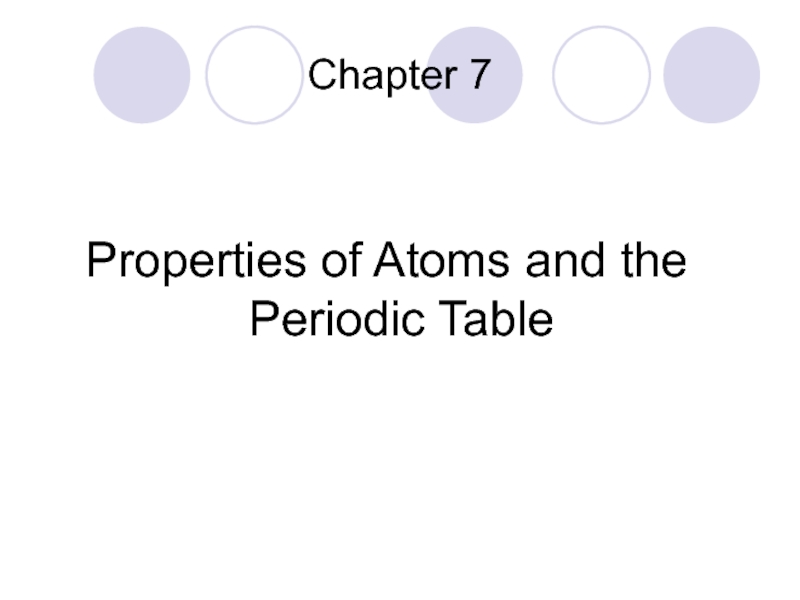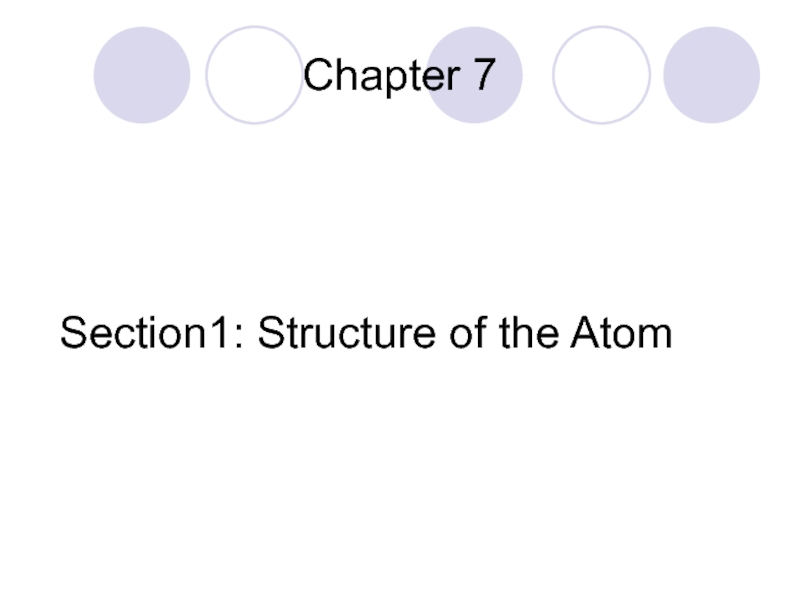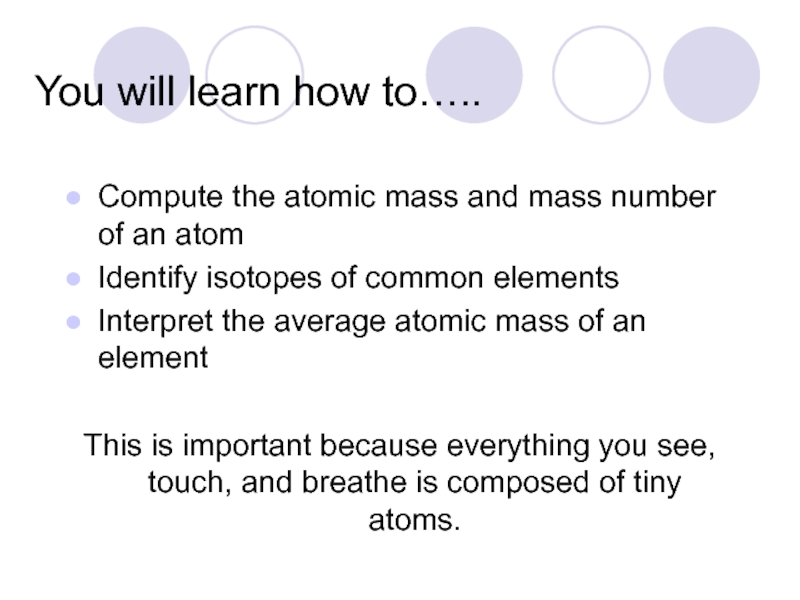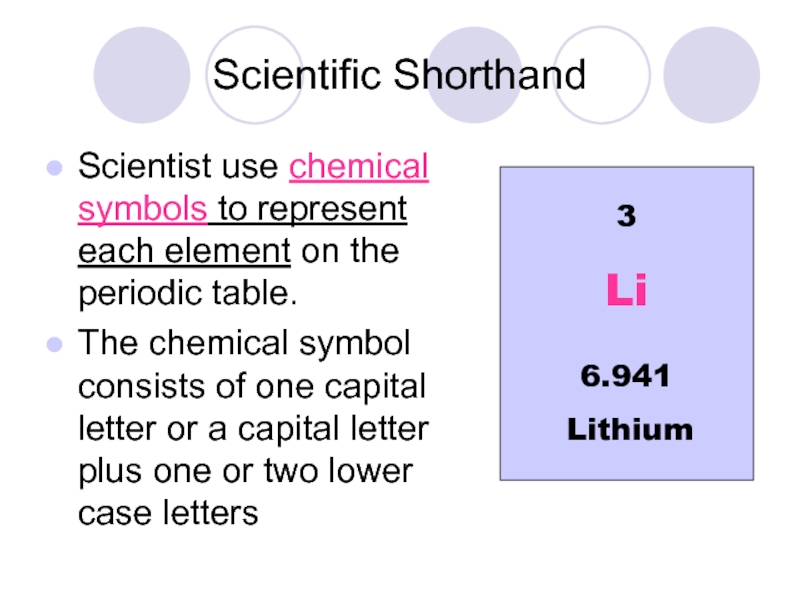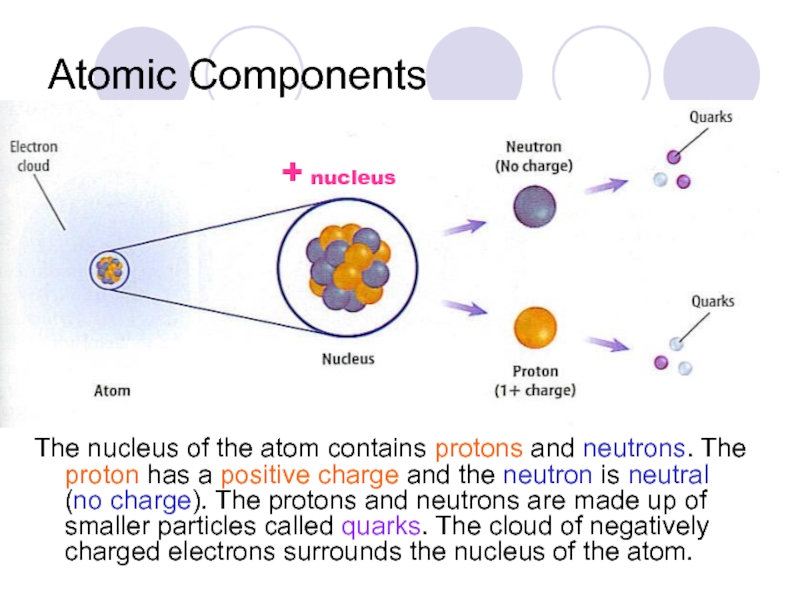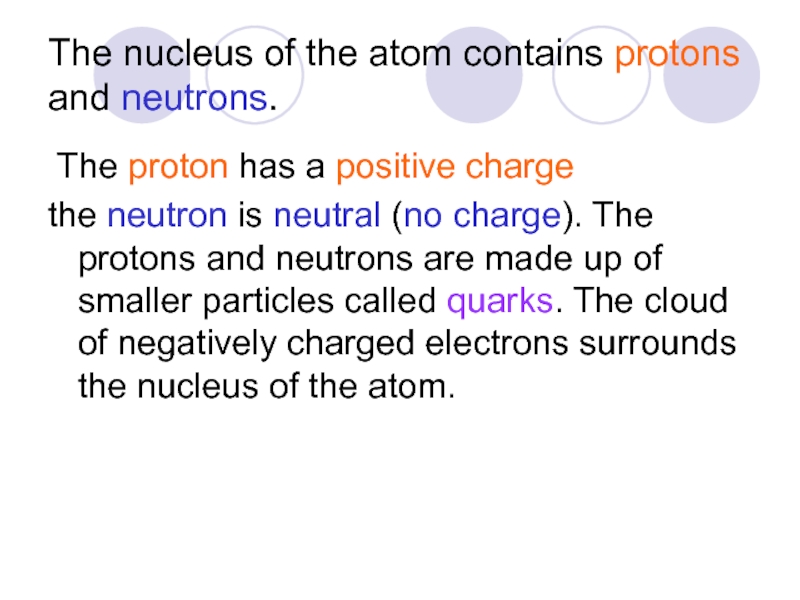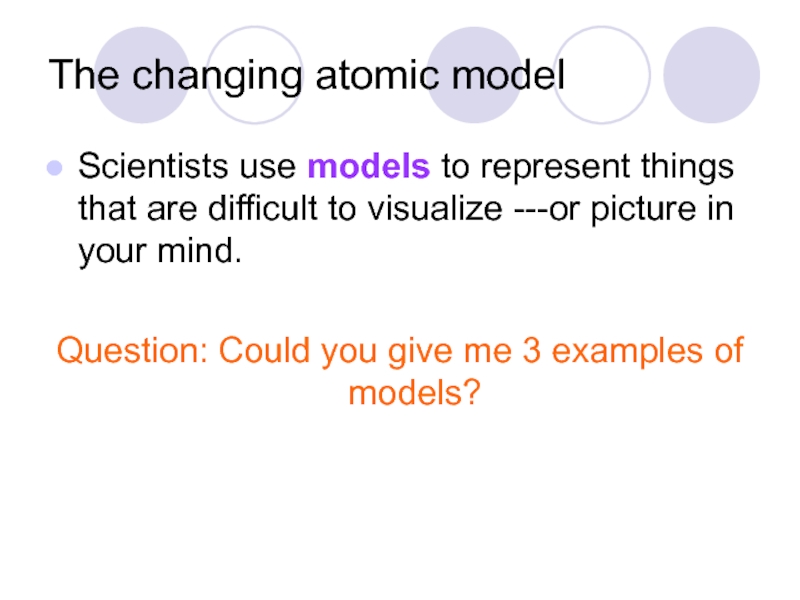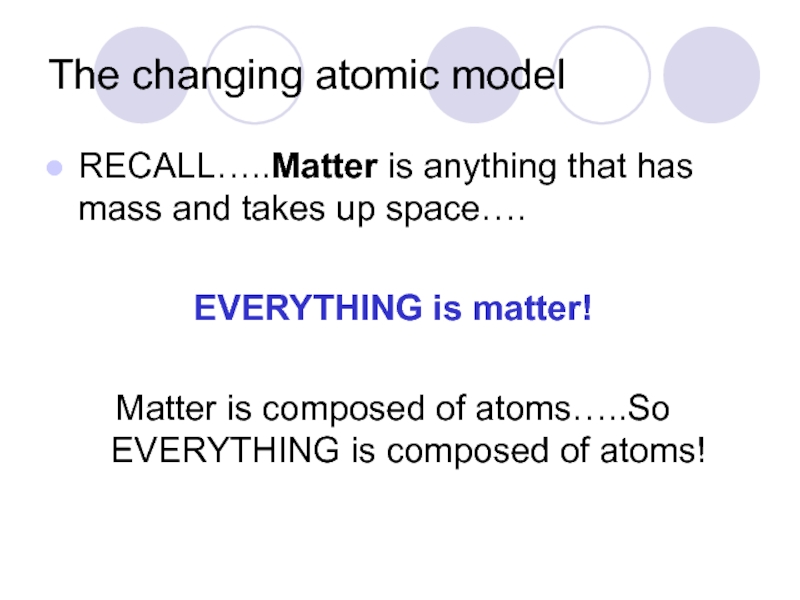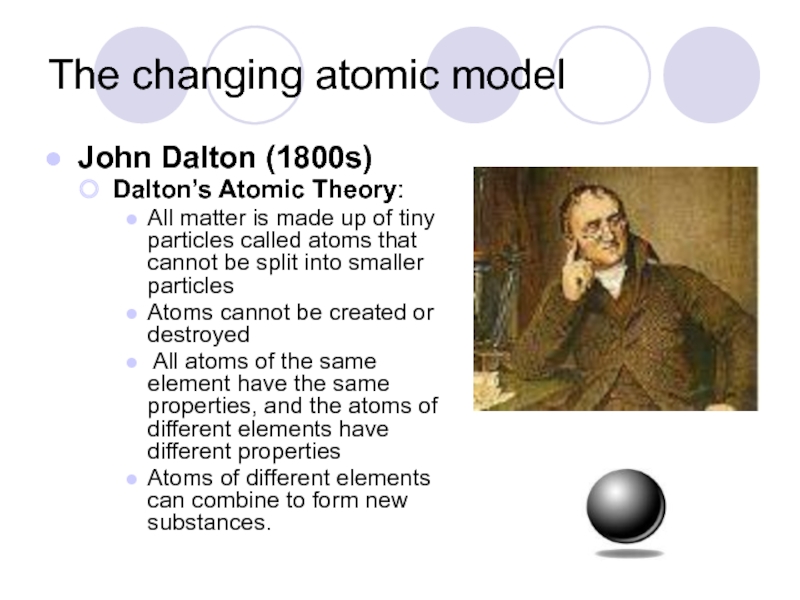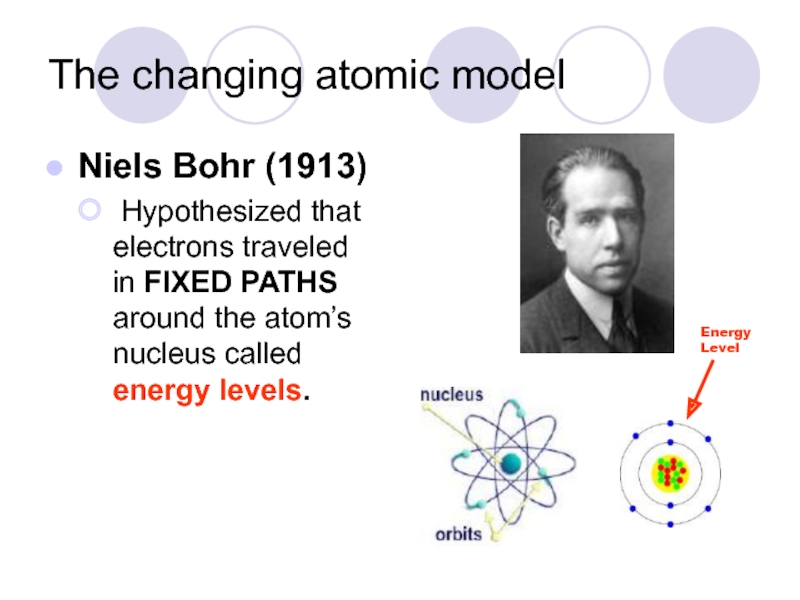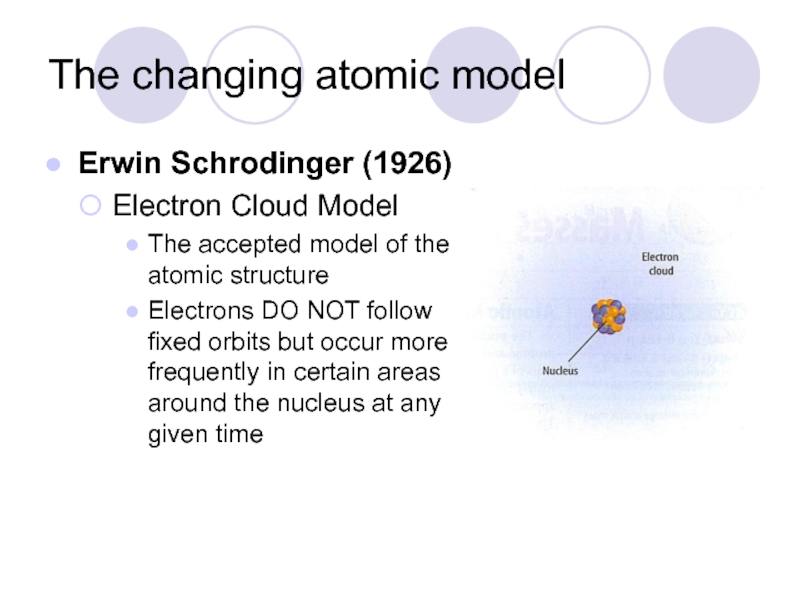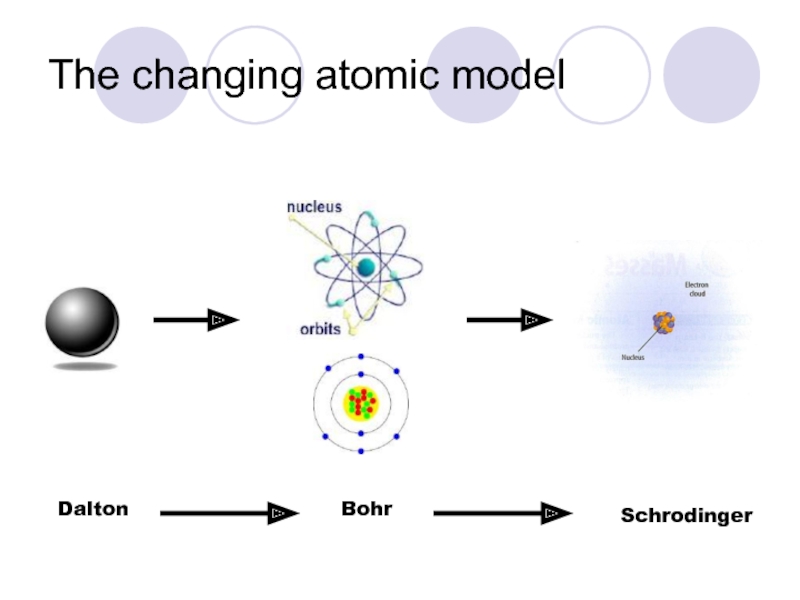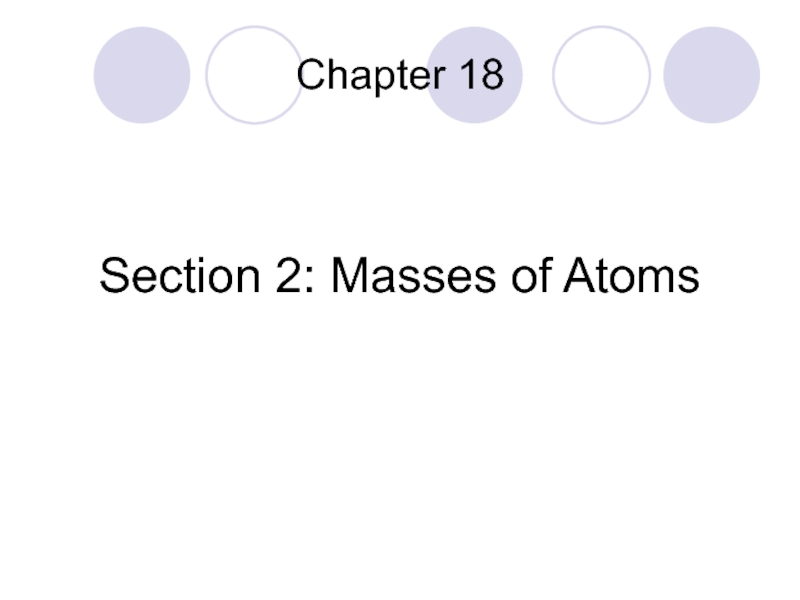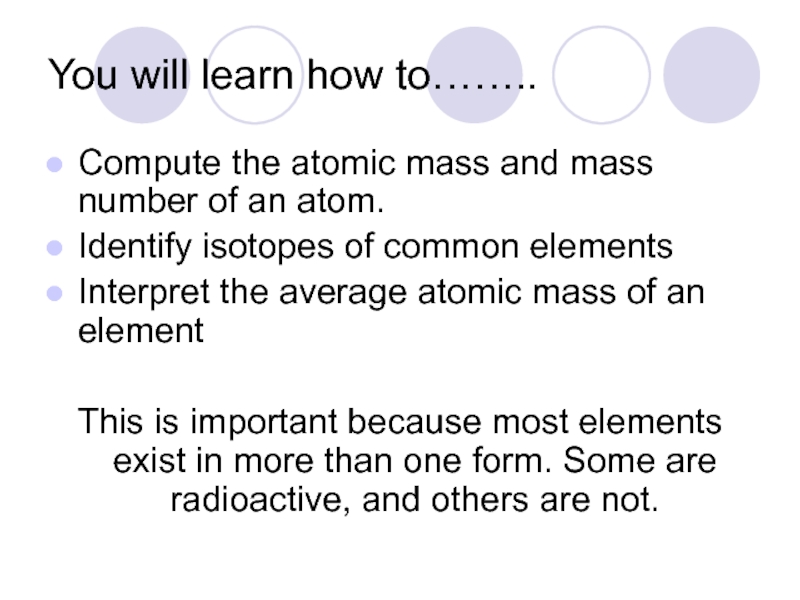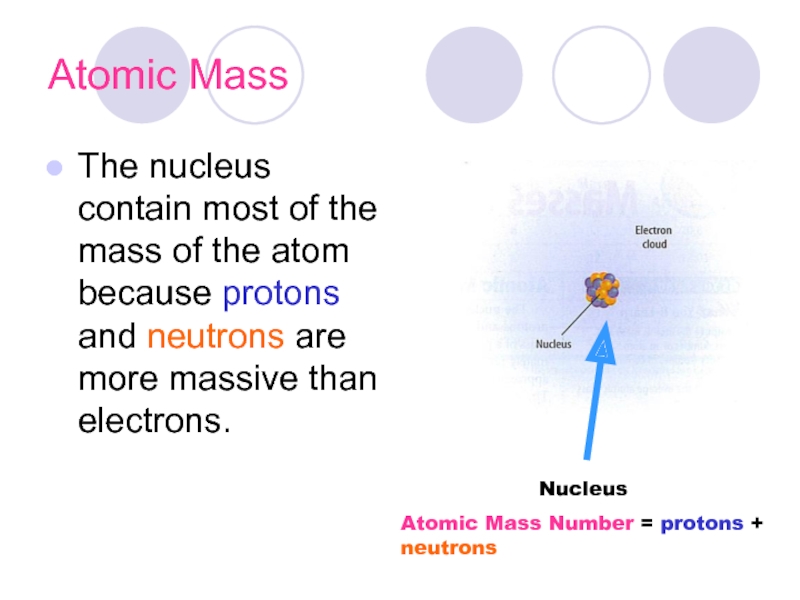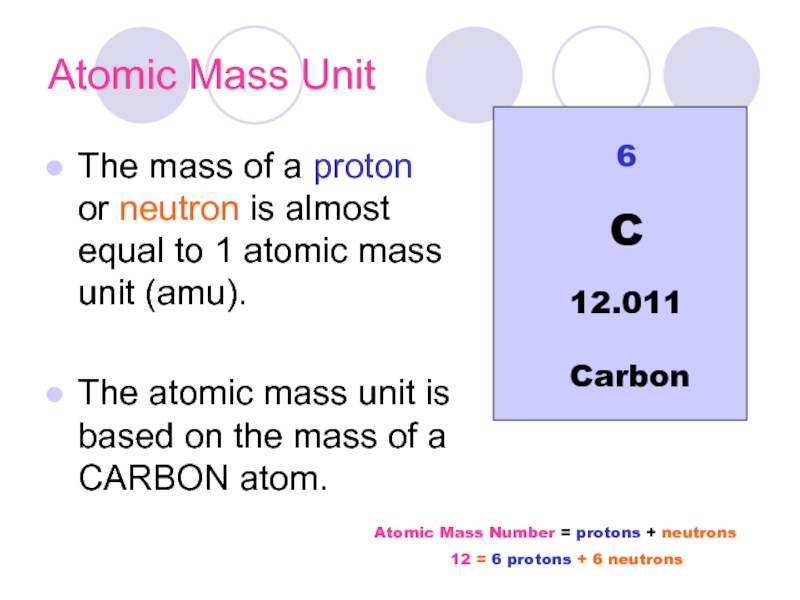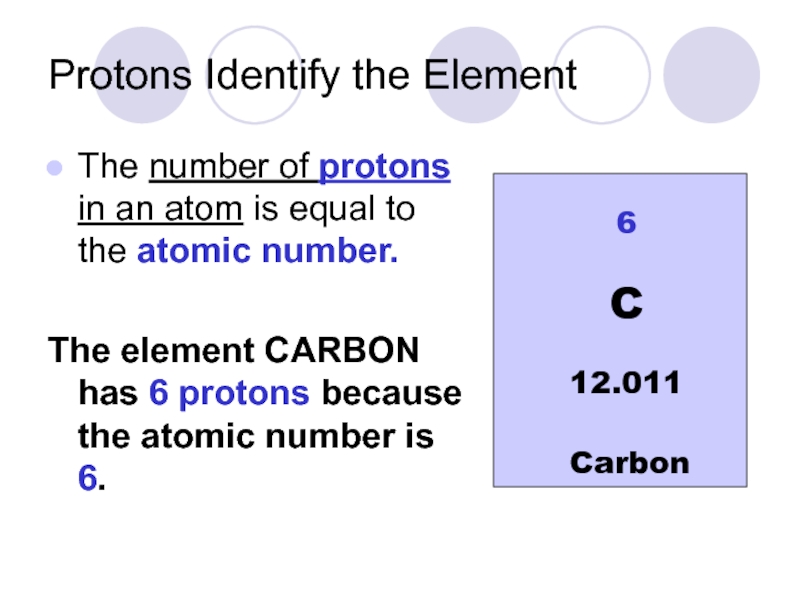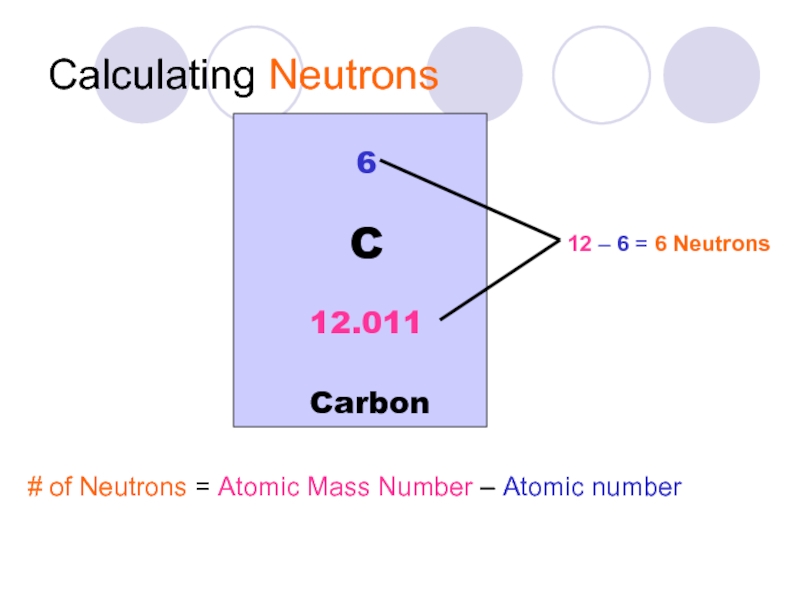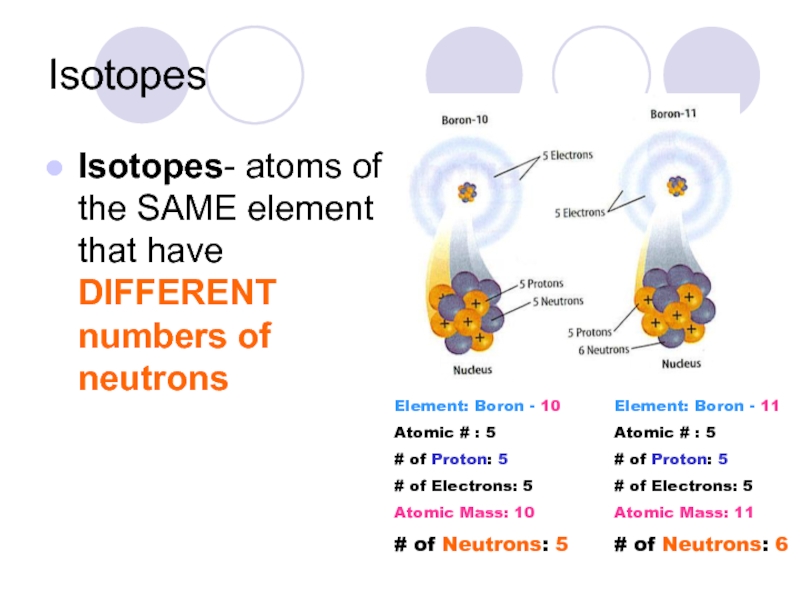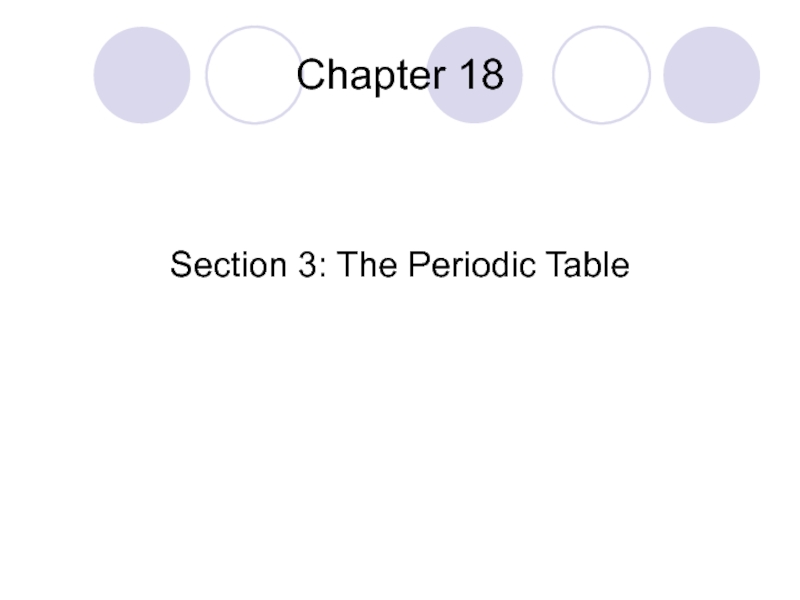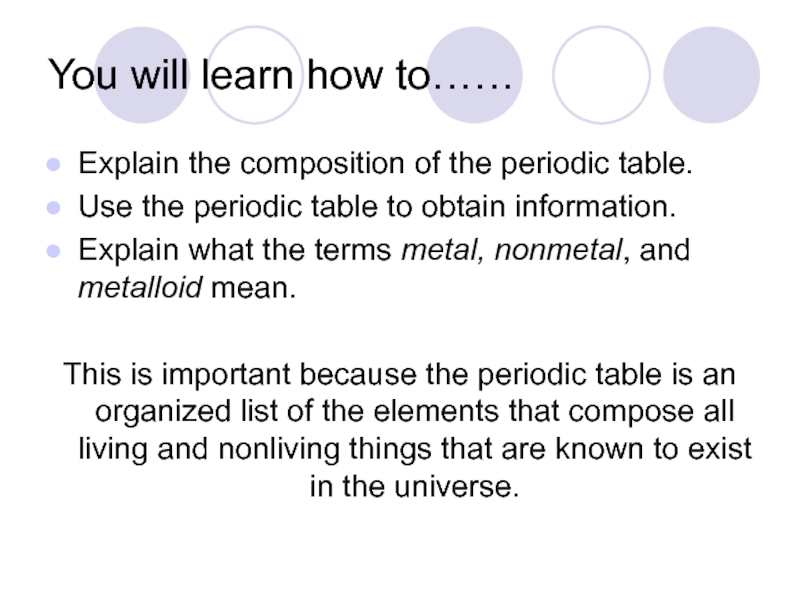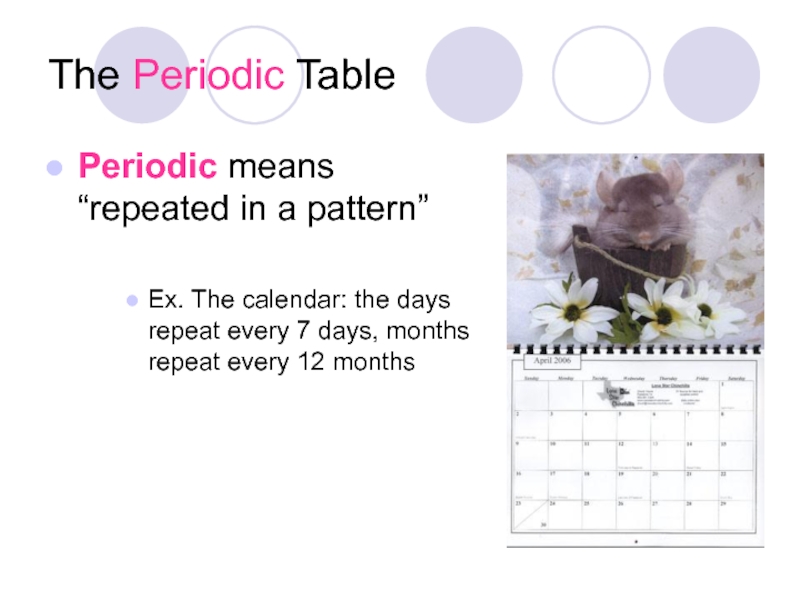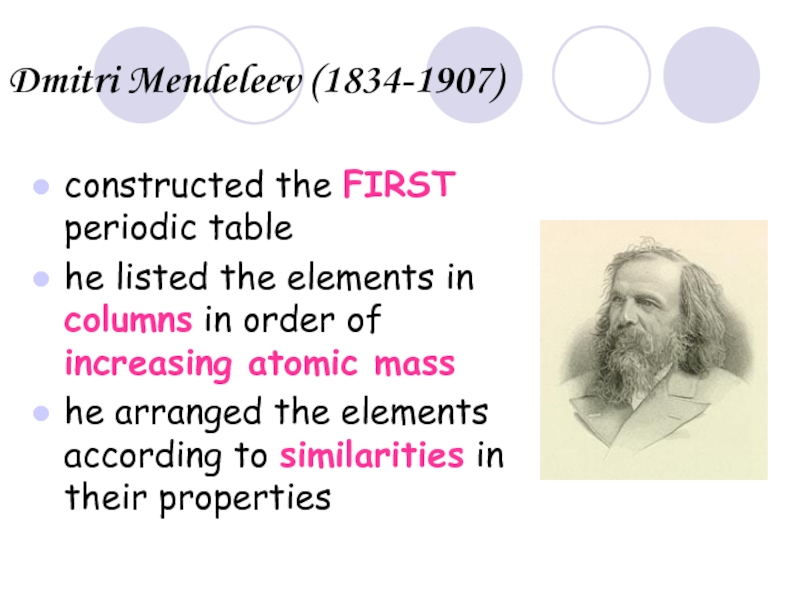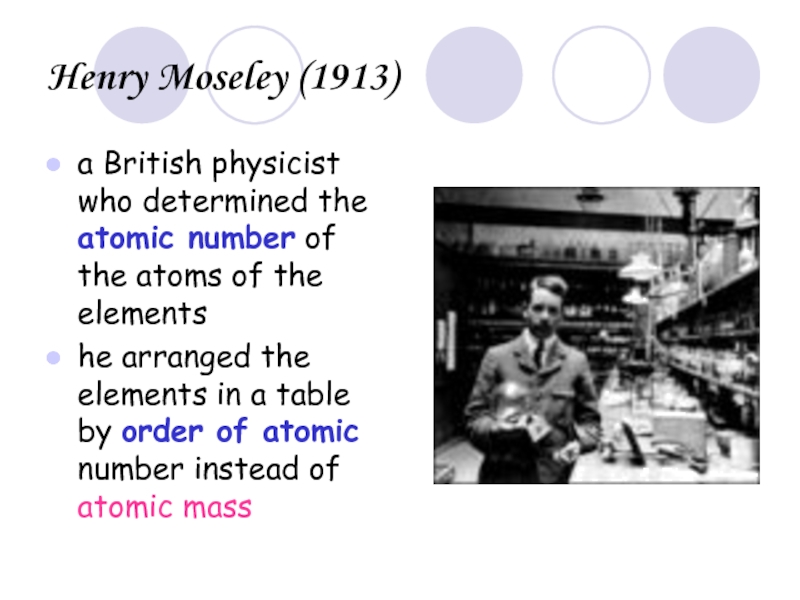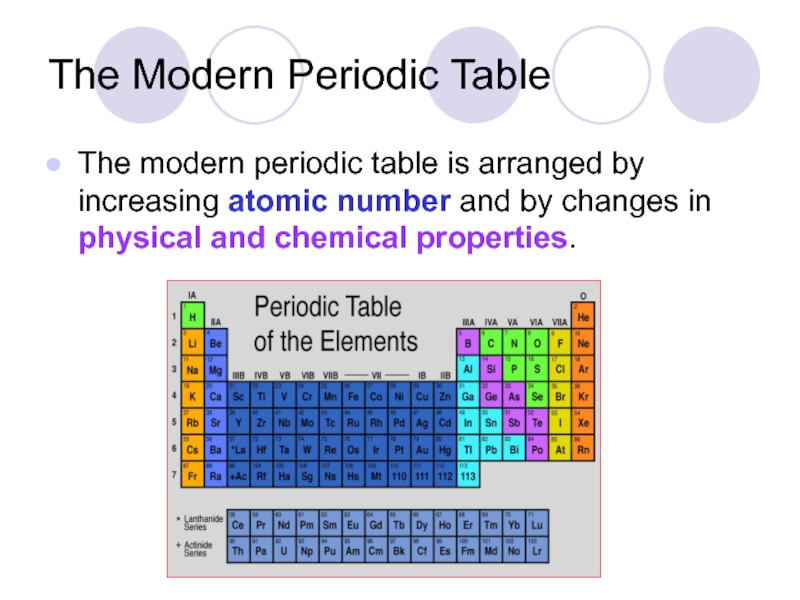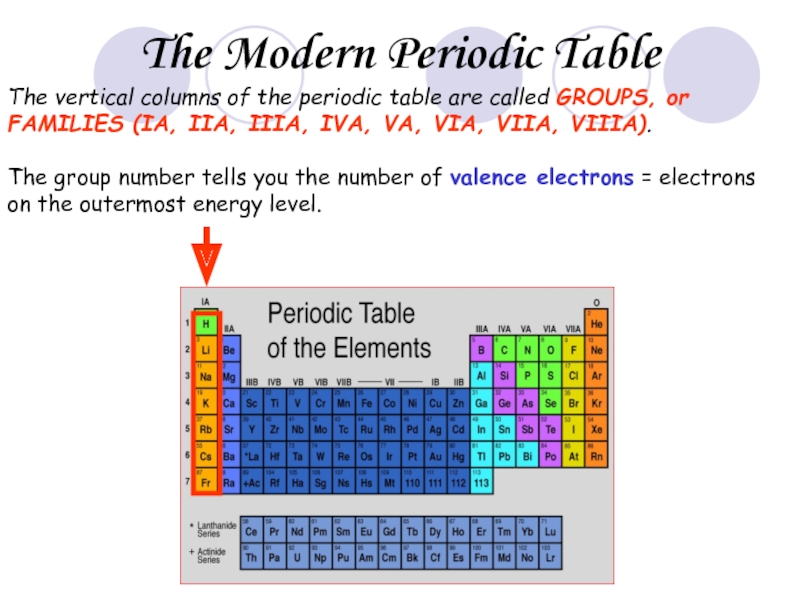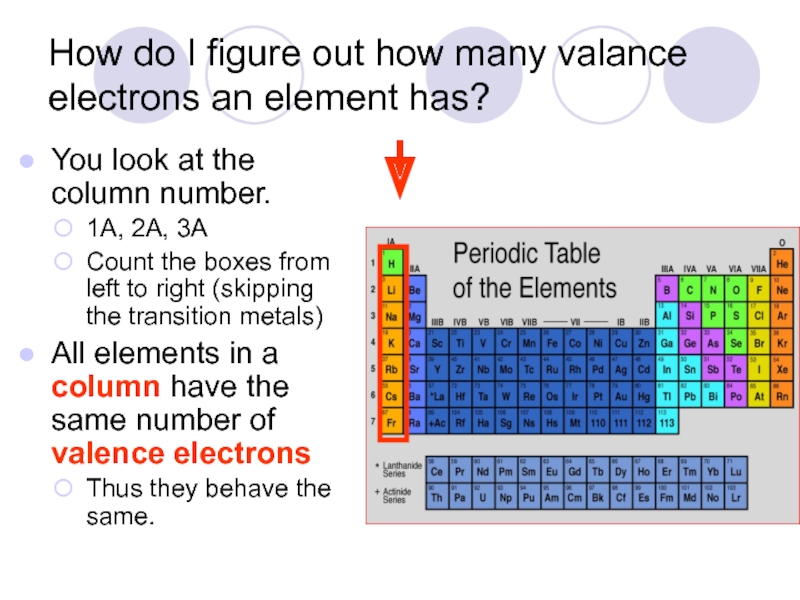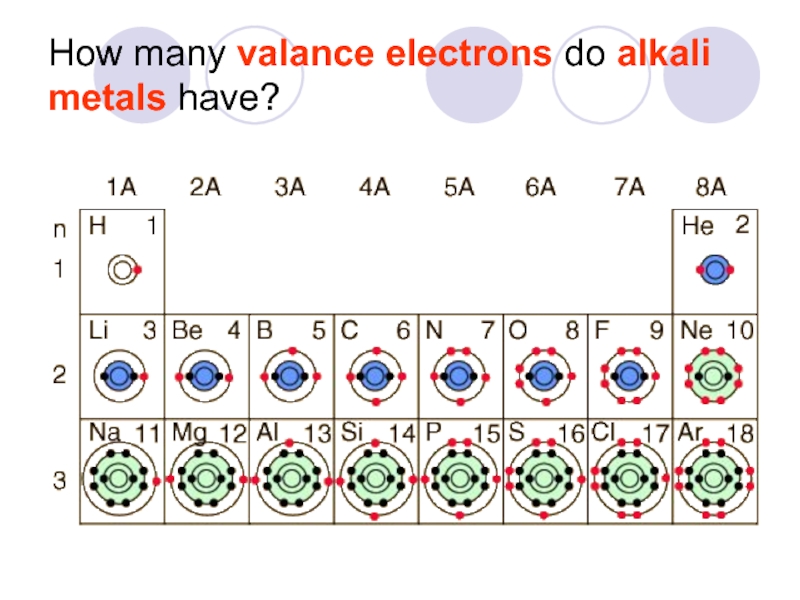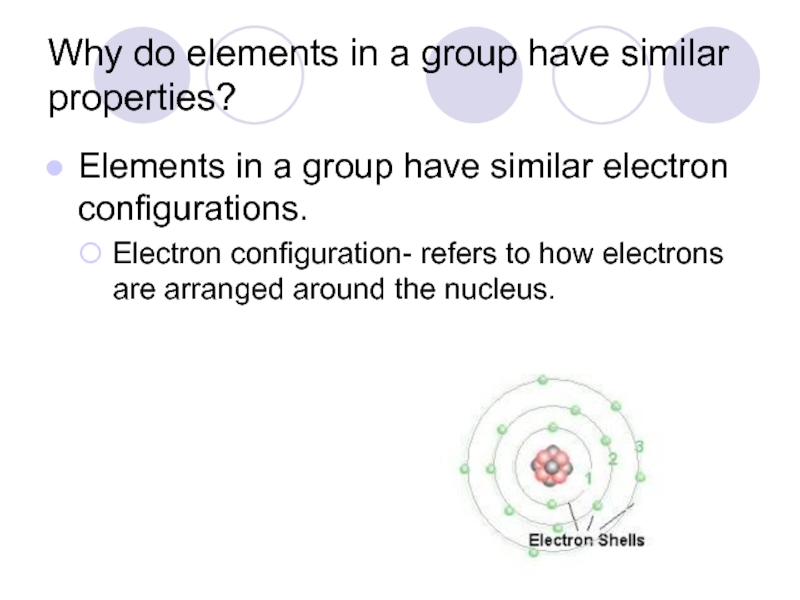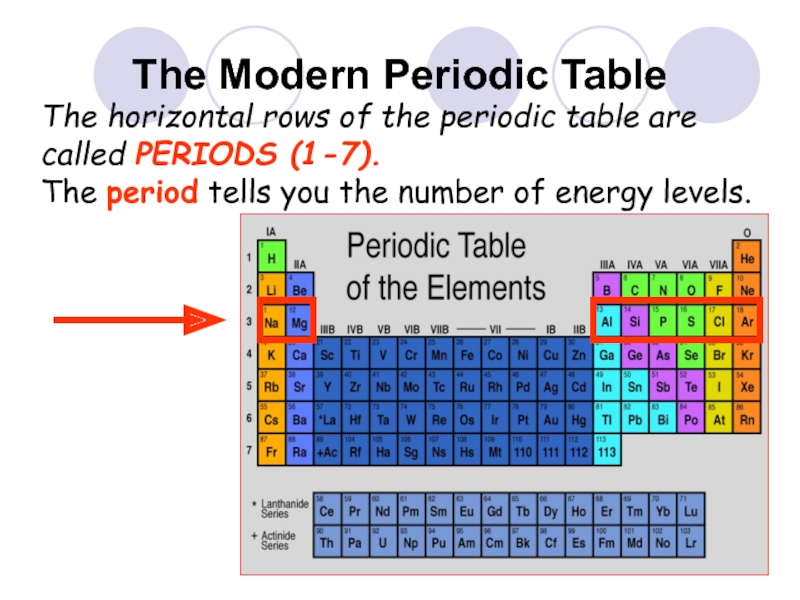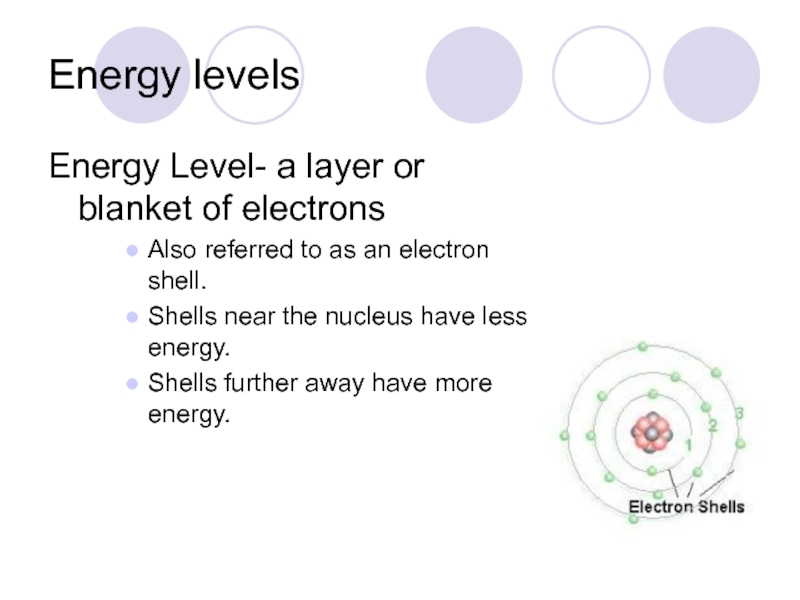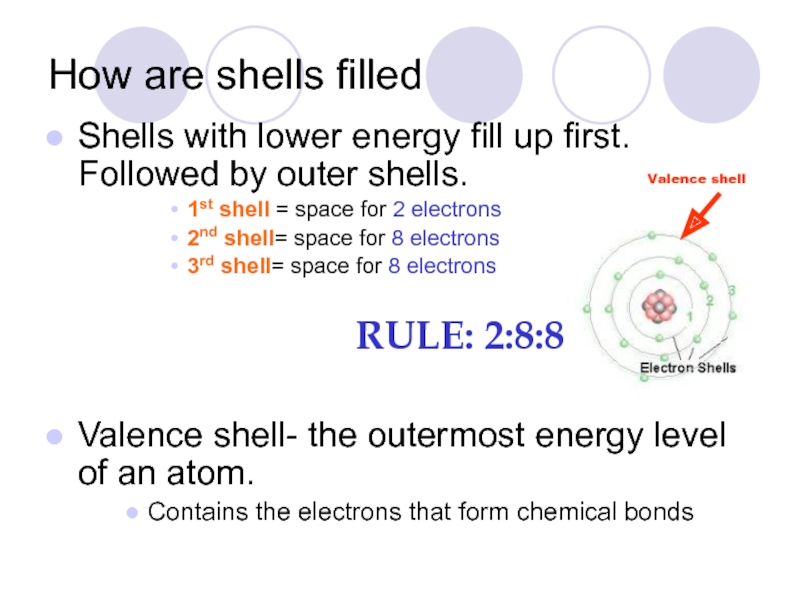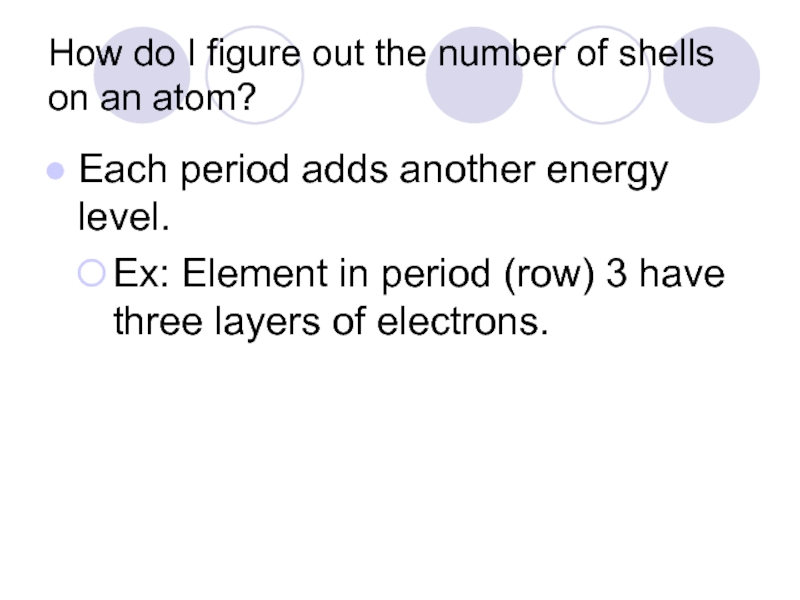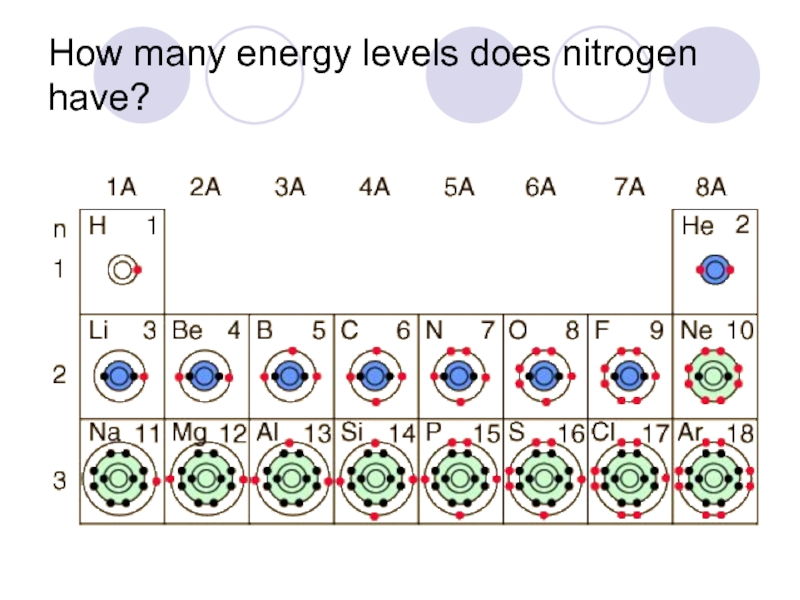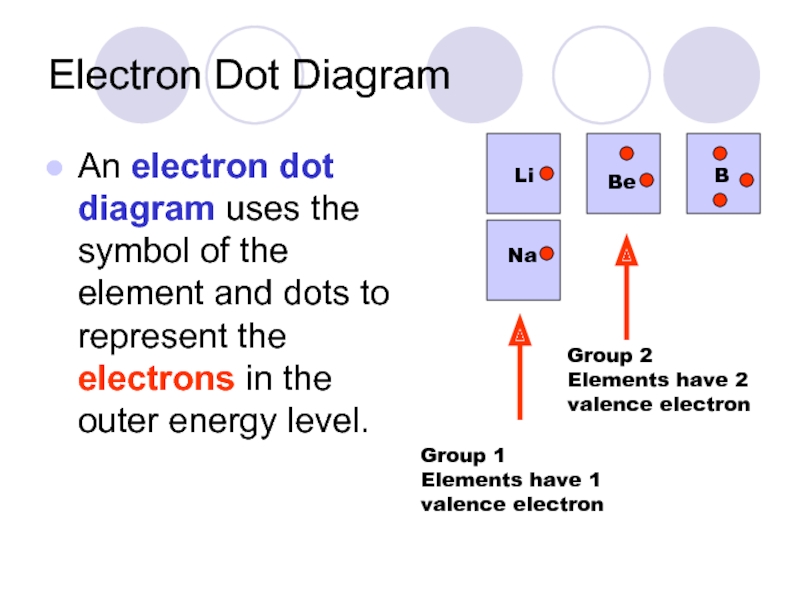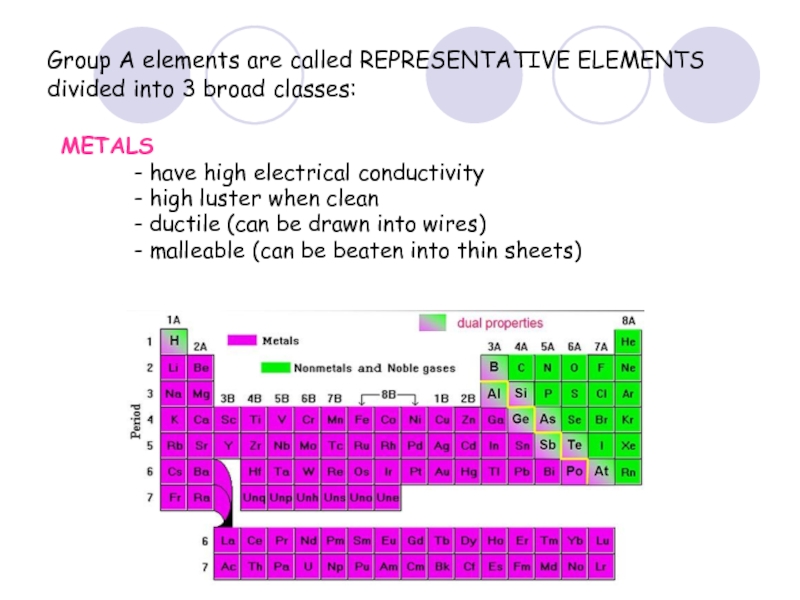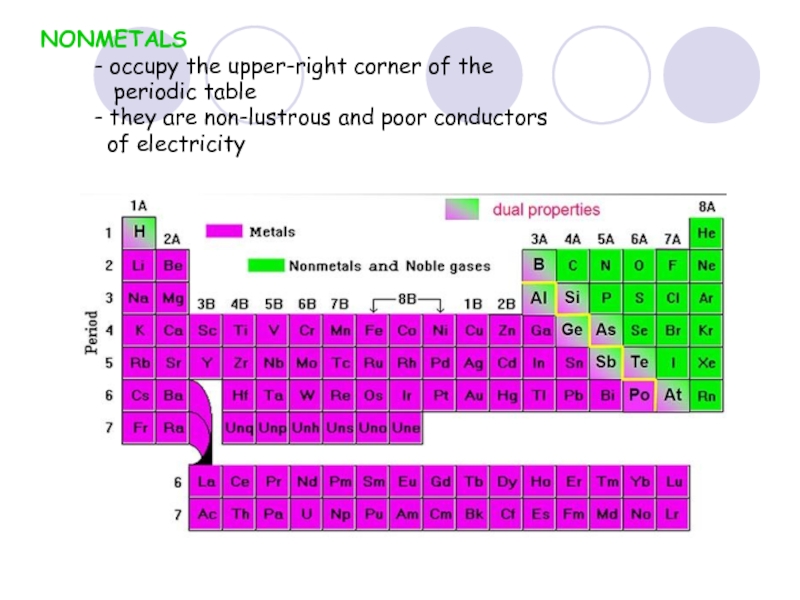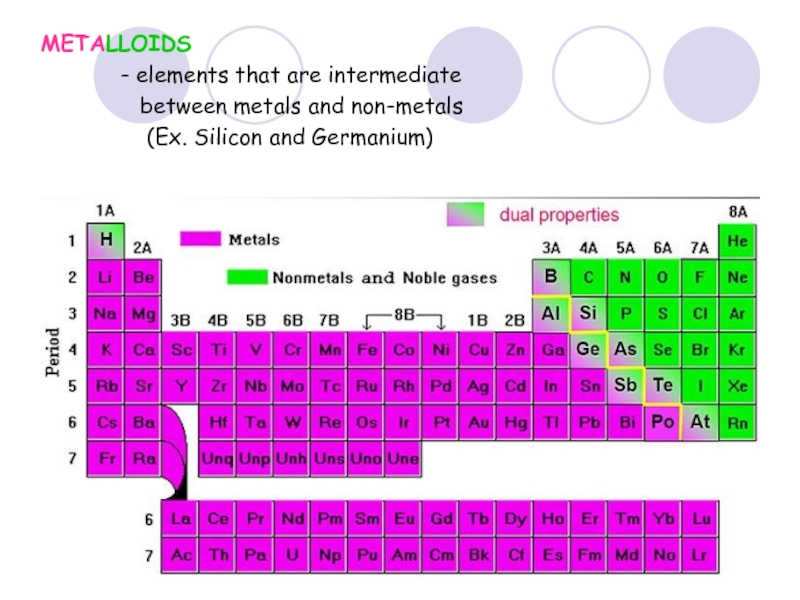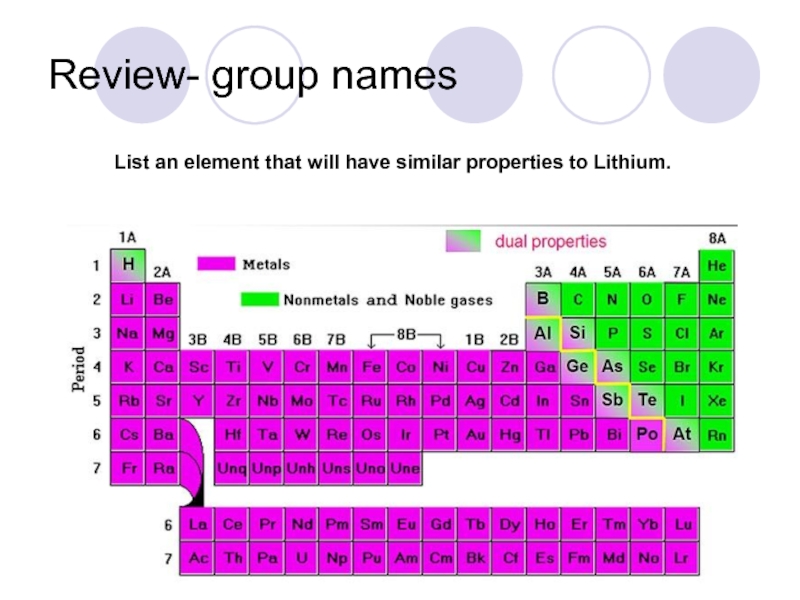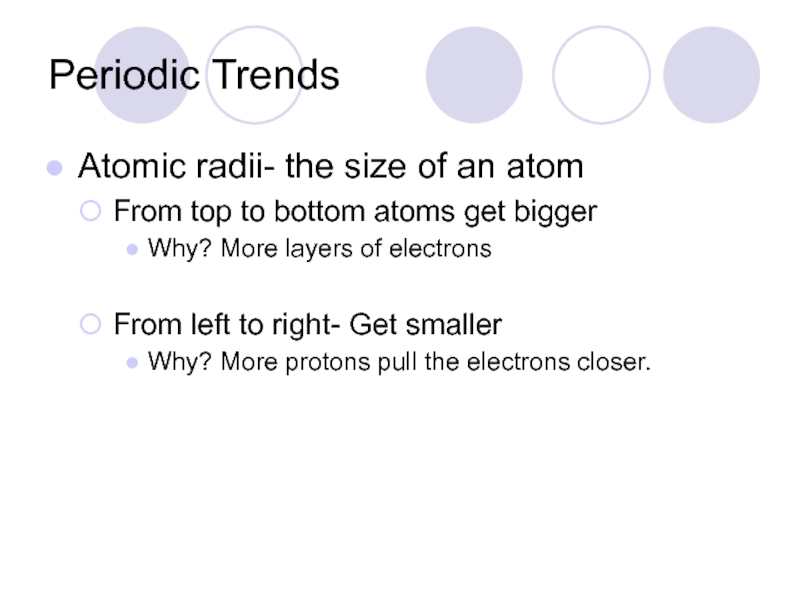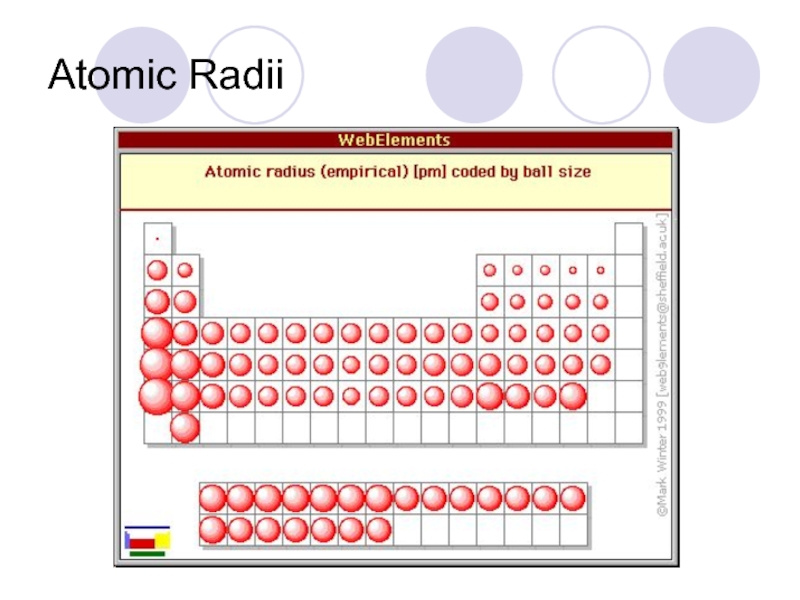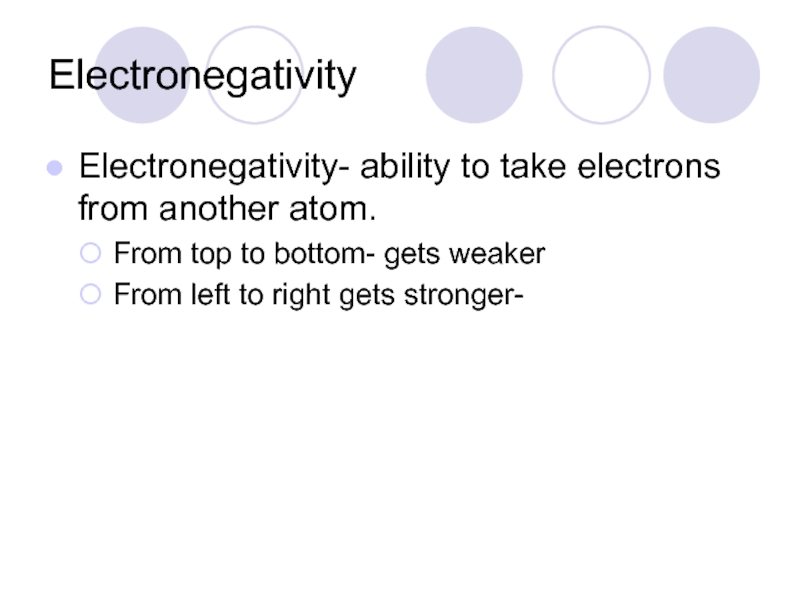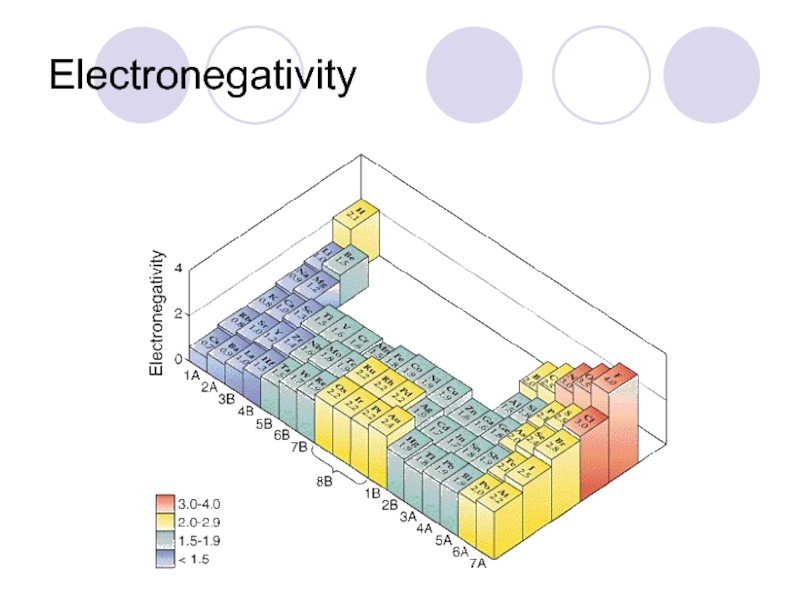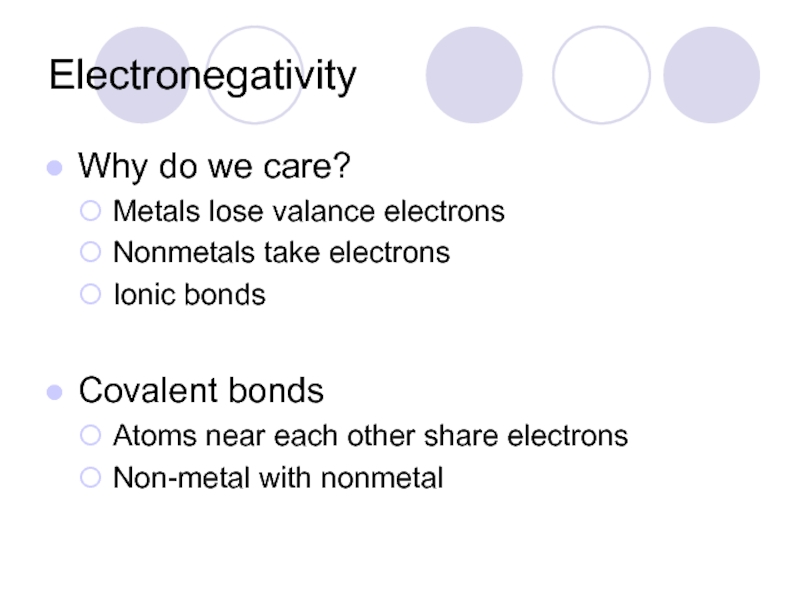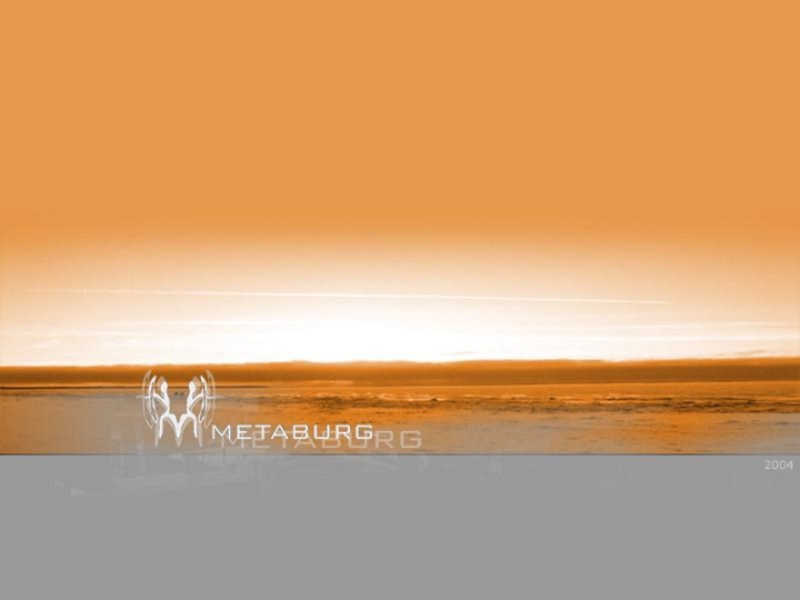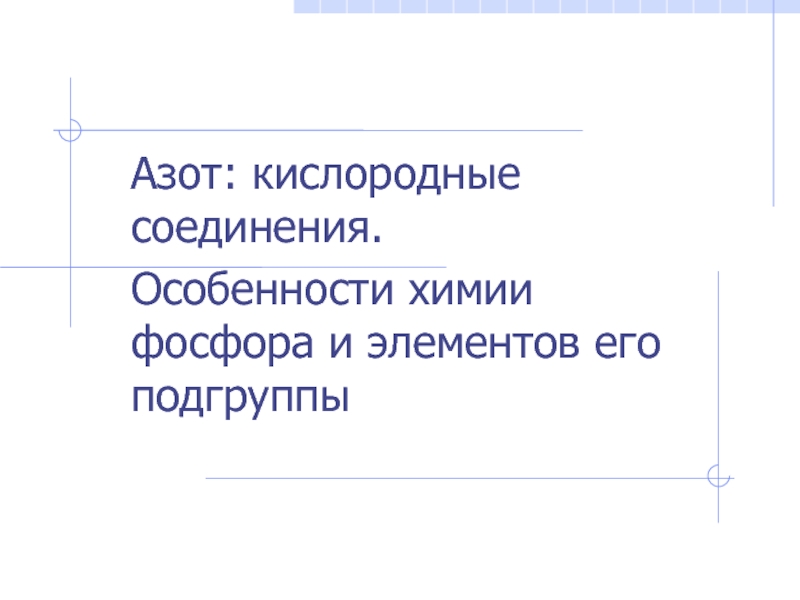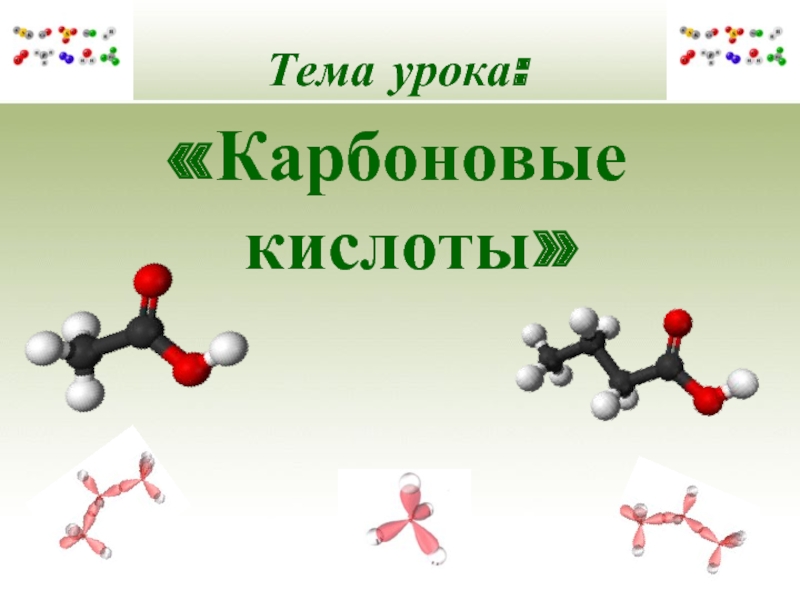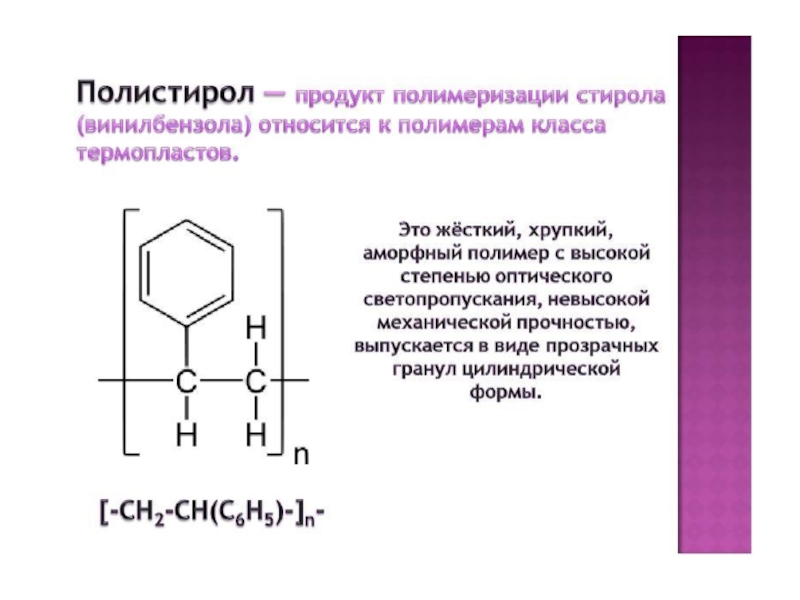- Главная
- Разное
- Дизайн
- Бизнес и предпринимательство
- Аналитика
- Образование
- Развлечения
- Красота и здоровье
- Финансы
- Государство
- Путешествия
- Спорт
- Недвижимость
- Армия
- Графика
- Культурология
- Еда и кулинария
- Лингвистика
- Английский язык
- Астрономия
- Алгебра
- Биология
- География
- Детские презентации
- Информатика
- История
- Литература
- Маркетинг
- Математика
- Медицина
- Менеджмент
- Музыка
- МХК
- Немецкий язык
- ОБЖ
- Обществознание
- Окружающий мир
- Педагогика
- Русский язык
- Технология
- Физика
- Философия
- Химия
- Шаблоны, картинки для презентаций
- Экология
- Экономика
- Юриспруденция
Properties of Atoms and the Periodic Table презентация
Содержание
- 1. Properties of Atoms and the Periodic Table
- 2. Chapter 7 Section1: Structure of the Atom
- 3. You will learn how to….. Compute the
- 4. Scientific Shorthand Scientist use chemical symbols to
- 5. Atomic Components The nucleus of the atom
- 6. The nucleus of the atom contains protons
- 7. The changing atomic model Scientists use models
- 8. The changing atomic model RECALL…..Matter is anything
- 9. The changing atomic model John Dalton (1800s)
- 10. The changing atomic model Niels Bohr (1913)
- 11. The changing atomic model Erwin Schrodinger (1926)
- 12. The changing atomic model Dalton Bohr Schrodinger
- 13. Chapter 18 Section 2: Masses of Atoms
- 14. You will learn how to…….. Compute the
- 15. Atomic Mass The nucleus contain most of
- 16. Atomic Mass Unit The mass of a
- 17. Protons Identify the Element The number of
- 18. Calculating Neutrons # of Neutrons = Atomic
- 19. Isotopes Isotopes- atoms of the SAME element
- 20. Chapter 18 Section 3: The Periodic Table
- 21. You will learn how to…… Explain the
- 22. The Periodic Table Periodic means “repeated in
- 23. Dmitri Mendeleev (1834-1907) constructed the FIRST
- 24. Henry Moseley (1913) a British physicist who
- 25. The Modern Periodic Table The modern periodic
- 26. The vertical columns of the periodic table
- 27. How do I figure out how many
- 28. How many valance electrons do alkali metals have?
- 29. Why do elements in a group have
- 30. The Modern Periodic Table The horizontal rows
- 31. Energy levels Energy Level- a layer or
- 32. How are shells filled Shells with lower
- 33. How do I figure out the number
- 34. How many energy levels does nitrogen have?
- 35. Electron Dot Diagram An electron dot diagram
- 36. Group A elements are called REPRESENTATIVE ELEMENTS
- 37. NONMETALS - occupy
- 38. METALLOIDS
- 39. Review- group names List an element that will have similar properties to Lithium.
- 40. Periodic Trends Atomic radii- the size of
- 41. Atomic Radii
- 42. Electronegativity Electronegativity- ability to take electrons from
- 43. Electronegativity
- 44. Electronegativity Why do we care? Metals lose
Слайд 3You will learn how to…..
Compute the atomic mass and mass number
Identify isotopes of common elements
Interpret the average atomic mass of an element
This is important because everything you see, touch, and breathe is composed of tiny atoms.
Слайд 4Scientific Shorthand
Scientist use chemical symbols to represent each element on the
The chemical symbol consists of one capital letter or a capital letter plus one or two lower case letters
3
Lithium
Li
6.941
Слайд 5Atomic Components
The nucleus of the atom contains protons and neutrons. The
+ nucleus
Слайд 6The nucleus of the atom contains protons and neutrons.
The proton
the neutron is neutral (no charge). The protons and neutrons are made up of smaller particles called quarks. The cloud of negatively charged electrons surrounds the nucleus of the atom.
Слайд 7The changing atomic model
Scientists use models to represent things that are
Question: Could you give me 3 examples of models?
Слайд 8The changing atomic model
RECALL…..Matter is anything that has mass and takes
EVERYTHING is matter!
Matter is composed of atoms…..So EVERYTHING is composed of atoms!
Слайд 9The changing atomic model
John Dalton (1800s)
Dalton’s Atomic Theory:
All matter is made
Atoms cannot be created or destroyed
All atoms of the same element have the same properties, and the atoms of different elements have different properties
Atoms of different elements can combine to form new substances.
Слайд 10The changing atomic model
Niels Bohr (1913)
Hypothesized that electrons traveled in
Energy Level
Слайд 11The changing atomic model
Erwin Schrodinger (1926)
Electron Cloud Model
The accepted model of
Electrons DO NOT follow fixed orbits but occur more frequently in certain areas around the nucleus at any given time
Слайд 14You will learn how to……..
Compute the atomic mass and mass number
Identify isotopes of common elements
Interpret the average atomic mass of an element
This is important because most elements exist in more than one form. Some are radioactive, and others are not.
Слайд 15Atomic Mass
The nucleus contain most of the mass of the atom
Nucleus
Atomic Mass Number = protons + neutrons
Слайд 16Atomic Mass Unit
The mass of a proton or neutron is almost
The atomic mass unit is based on the mass of a CARBON atom.
6
Carbon
C
12.011
Atomic Mass Number = protons + neutrons
12 = 6 protons + 6 neutrons
Слайд 17Protons Identify the Element
The number of protons in an atom is
The element CARBON has 6 protons because the atomic number is 6.
6
Carbon
C
12.011
Слайд 18Calculating Neutrons
# of Neutrons = Atomic Mass Number – Atomic number
6
Carbon
C
12.011
12
Слайд 19Isotopes
Isotopes- atoms of the SAME element that have DIFFERENT numbers of
Element: Boron - 10
Atomic # : 5
# of Proton: 5
# of Electrons: 5
Atomic Mass: 10
# of Neutrons: 5
Element: Boron - 11
Atomic # : 5
# of Proton: 5
# of Electrons: 5
Atomic Mass: 11
# of Neutrons: 6
Слайд 21You will learn how to……
Explain the composition of the periodic table.
Use
Explain what the terms metal, nonmetal, and metalloid mean.
This is important because the periodic table is an organized list of the elements that compose all living and nonliving things that are known to exist in the universe.
Слайд 22The Periodic Table
Periodic means “repeated in a pattern”
Ex. The calendar: the
Слайд 23Dmitri Mendeleev (1834-1907)
constructed the FIRST periodic table
he listed the elements in
he arranged the elements according to similarities in their properties
Слайд 24Henry Moseley (1913)
a British physicist who determined the atomic number of
he arranged the elements in a table by order of atomic number instead of atomic mass
Слайд 25The Modern Periodic Table
The modern periodic table is arranged by increasing
Слайд 26The vertical columns of the periodic table are called GROUPS, or
The group number tells you the number of valence electrons = electrons on the outermost energy level.
The Modern Periodic Table
Слайд 27How do I figure out how many valance electrons an element
You look at the column number.
1A, 2A, 3A
Count the boxes from left to right (skipping the transition metals)
All elements in a column have the same number of valence electrons
Thus they behave the same.
Слайд 29Why do elements in a group have similar properties?
Elements in a
Electron configuration- refers to how electrons are arranged around the nucleus.
Слайд 30The Modern Periodic Table
The horizontal rows of the periodic table are
The period tells you the number of energy levels.
Слайд 31Energy levels
Energy Level- a layer or blanket of electrons
Also referred to
Shells near the nucleus have less energy.
Shells further away have more energy.
Слайд 32How are shells filled
Shells with lower energy fill up first. Followed
1st shell = space for 2 electrons
2nd shell= space for 8 electrons
3rd shell= space for 8 electrons
RULE: 2:8:8
Valence shell- the outermost energy level of an atom.
Contains the electrons that form chemical bonds
Valence shell
Слайд 33How do I figure out the number of shells on an
Each period adds another energy level.
Ex: Element in period (row) 3 have three layers of electrons.
Слайд 35Electron Dot Diagram
An electron dot diagram uses the symbol of the
Li
Na
Be
B
Group 1 Elements have 1 valence electron
Group 2 Elements have 2 valence electron
Слайд 36Group A elements are called REPRESENTATIVE ELEMENTS divided into 3 broad
METALS
- have high electrical conductivity
- high luster when clean
- ductile (can be drawn into wires)
- malleable (can be beaten into thin sheets)
Слайд 37NONMETALS
- occupy the upper-right corner of the
- they are non-lustrous and poor conductors
of electricity
Слайд 38METALLOIDS
- elements that are
between metals and non-metals
(Ex. Silicon and Germanium)
Слайд 40Periodic Trends
Atomic radii- the size of an atom
From top to bottom
Why? More layers of electrons
From left to right- Get smaller
Why? More protons pull the electrons closer.
Слайд 42Electronegativity
Electronegativity- ability to take electrons from another atom.
From top to bottom-
From left to right gets stronger-
Слайд 44Electronegativity
Why do we care?
Metals lose valance electrons
Nonmetals take electrons
Ionic bonds
Covalent bonds
Atoms
Non-metal with nonmetal
